When starting a construction project or jumping into home repairs, having the right tools at your disposal is not just beneficial—it's essential. Among these, one seemingly simple tool stands out not only for its bright red color but also for its distinctive design: the carpenter's pencil.
Far from the familiar round or triangular pencils we've grown accustomed to, the carpenter's pencil boasts a unique flat, rectangular shape, crafted specifically for the demands of the construction environment. But why is this so? What benefits does this non-round core and wider sides provide to professionals and new homeowners alike?
In this article we look into the carpentry pencil, exploring their design, utility, and the various brands and variations available on the market. By addressing common concerns and questions, we aim to shed some light on why this construction pencils presence is a staple in tool belts across the construction industry, ensuring every mark is as accurate and legible as the tool that bears it.
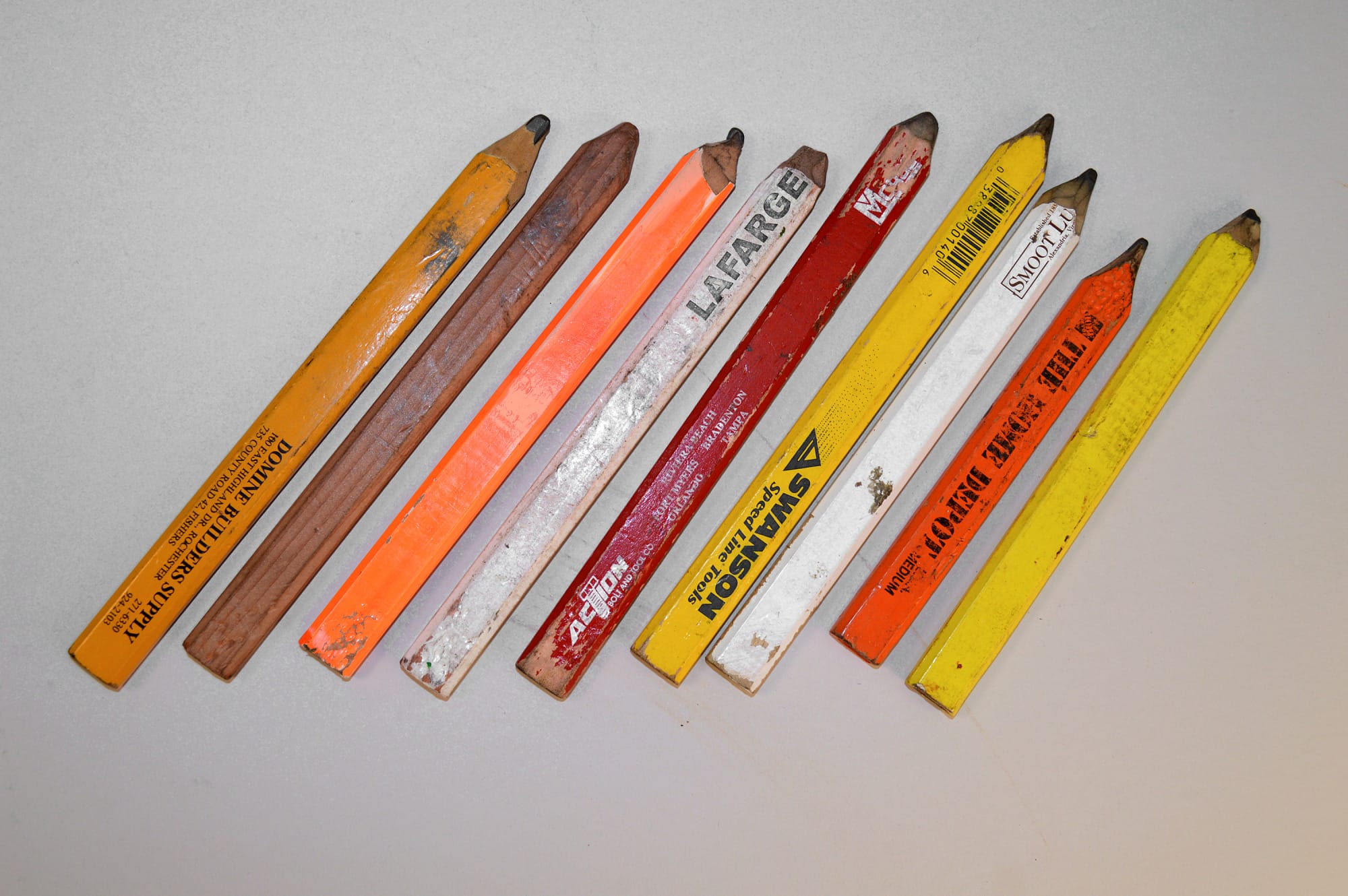
The Uniqueness of Carpenter Pencils
Carpenter pencils are common in the construction industry, and are distinguished by their flat, rectangular shape—a big contrast to the round or triangular design of traditional pencils. This distinct form isn't merely aesthetics; it serves several practical purposes that cater specifically to the needs of carpenters and construction professionals.
Designed for Practicality
The flat side of a carpenter's pencil ensures that it stays where it's placed, preventing it from rolling away on sloped or uneven surfaces—a common occurrence on construction sites. This design choice also allows for a larger surface area, making the pencil easier to grip, especially when wearing gloves or working in wet conditions. Moreover, the rectangular shape provides two usable edges for marking, allowing for both fine lines for precision work and thicker lines for visibility on rough surfaces.
Durability and Versatility
Carpenter pencils are designed to withstand the rigors of the construction environment. The hard graphite lead is resilient against breakage when applied to rough surfaces, such as the uneven surface of wood, bumpy surfaces of concrete, or even the smooth surface of tiles. This durability ensures that the pencil remains functional longer than standard pencils, which are prone to frequent breakage under similar conditions.
Marking Efficiency
The non-round core of a carpenter's pencil allows for the creation of thin lines, parallel lines, and even wider marks without the need for multiple tools. The ability to quickly switch between different line thicknesses by simply rotating the pencil is invaluable for marking measurements accurately and efficiently. Additionally, the bright red color of many carpenter pencils makes them easy to find in a busy work environment, ensuring they are always within reach when needed.
The Right Tool for the Right Job
Choosing the correct type of lead (hard, medium, or soft) based on the material being marked can greatly affect the visibility and longevity of the markings. Hard graphite lead, for example, is perfect for marking on rough surfaces where a softer lead might wear away too quickly, while medium graphite lead may be ideal for general-purpose marking on smoother surfaces.
Carpenter pencils exemplify the principle that even the simplest tools can be optimized for performance and efficiency. Their design is a testament to the understanding of the unique challenges faced in carpentry and construction, providing a solution that is both practical and effective.
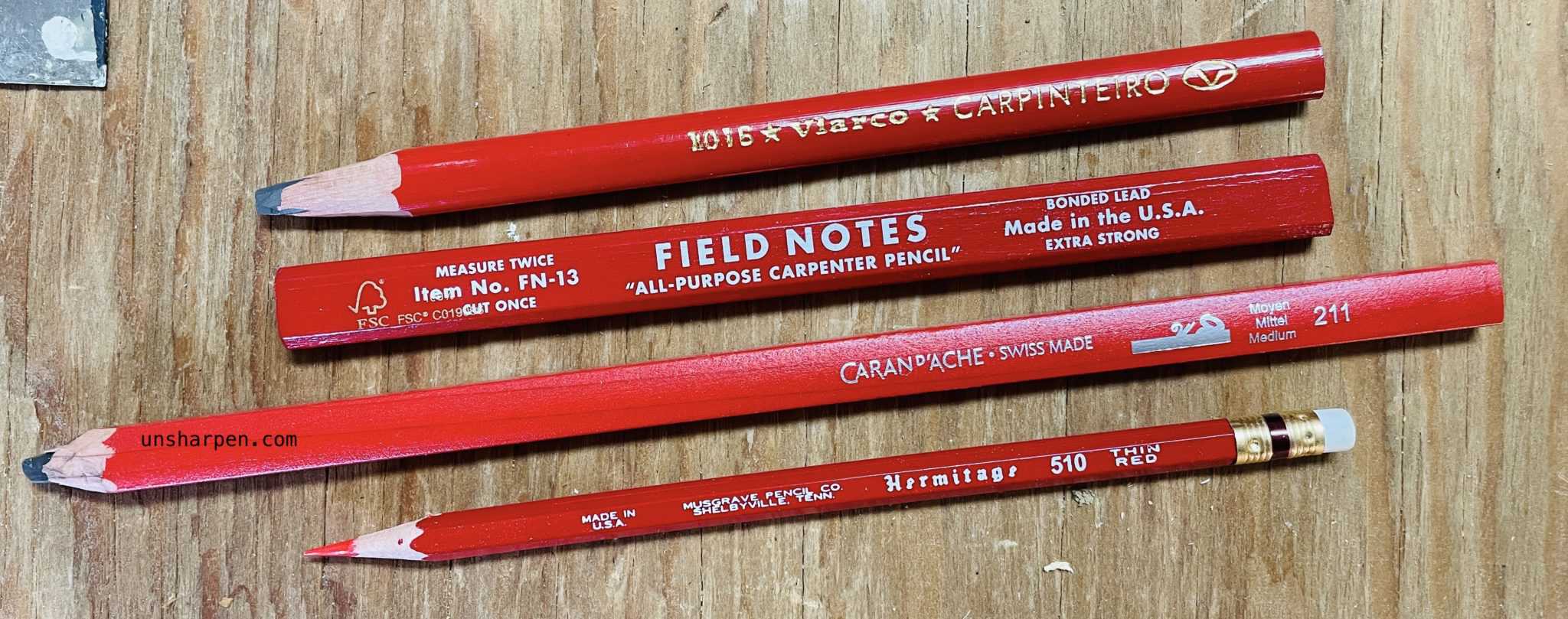
Carpenter Pencils vs. Regular Pencils
The choice between carpenter pencils and their normal pencil or mechanical counterparts is not just about preference but functionality and efficiency in a construction setting. While regular pencils may suffice for simple sketching or note-taking, the rugged environment of construction sites demands tools designed with specific challenges in mind.
Carpenter Pencils: The Workhorse of Construction
Carpenter pencils, with their robust design, are tailored for the harsh conditions of construction work. Their flat, rectangular shape ensures they stay put and don't roll away on inclined surfaces—a common annoyance in dynamic construction environments. This design also provides a larger surface area, allowing for a firmer grip and more controlled marking, crucial when precision is key. Moreover, the thick, hard graphite lead of carpenter pencils can withstand the pressure required to mark on rough surfaces without breaking, making them ideal for marking on wood, concrete, and even metal.
Regular and Mechanical Pencils: The Limitations
In contrast, regular and mechanical pencils, designed for writing on paper, often fall short in construction applications. Their round lead and thinner graphite core are prone to snapping when used on anything other than smooth surfaces. Plus, their round pencil bodies can easily roll off uneven surfaces, leading to frequent interruptions and potential loss of the tool.
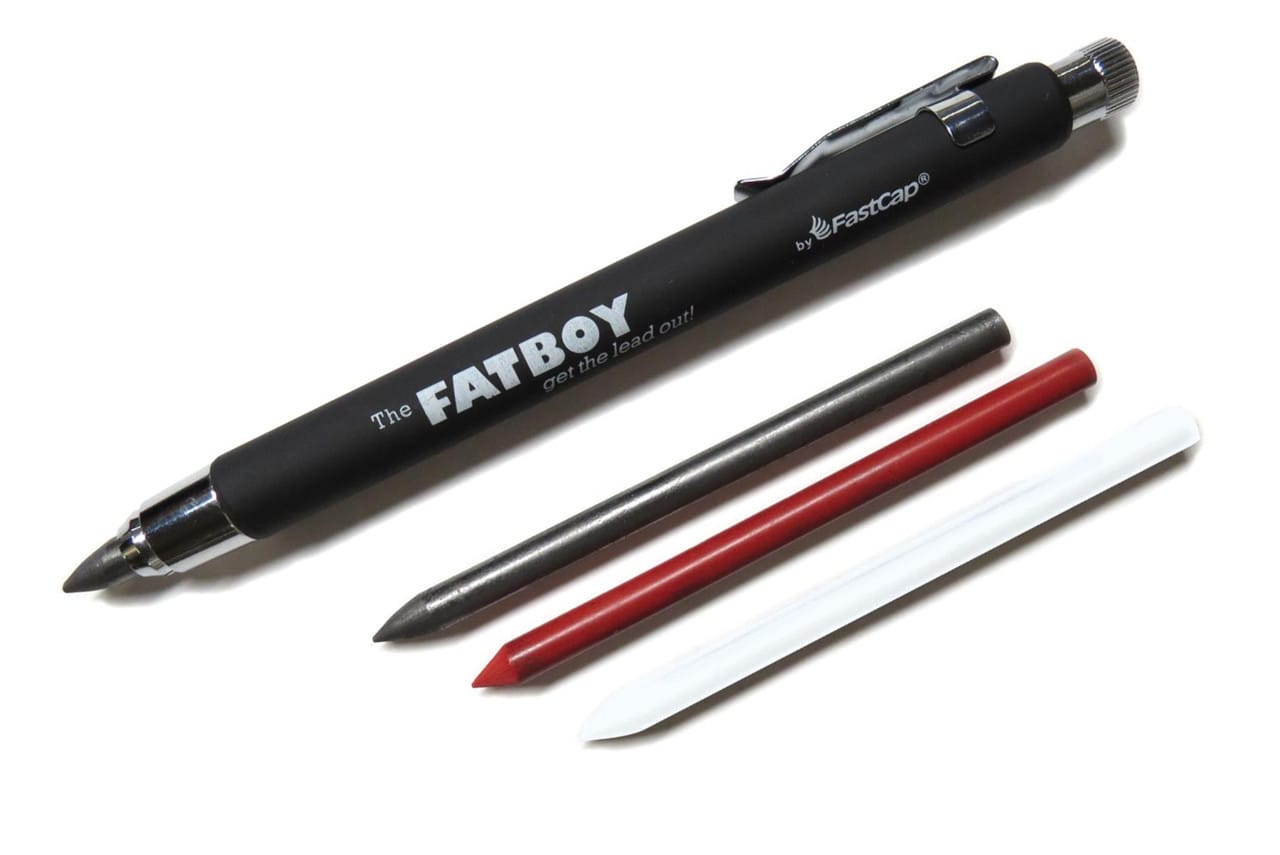
The FastCap FatBoy Pencil Kit: A Modern Twist
A notable mention in the evolution of carpenter pencils is the FastCap FatBoy Pencil Kit, which merges the durability and practicality of traditional carpenter pencils with the convenience of a mechanical pencil. This kit includes a robust mechanical pencil with an unbreakable 5.5mm lead, easily sharpened in a standard pencil sharpener, and versatile enough for marking on a variety of materials thanks to its standard HB2 lead, red crayon, and white soapstone options. This blend of traditional durability with modern versatility makes the FastCap FatBoy an invaluable tool in any construction professional's work belt.
While traditional pencils have their place in offices and classrooms, the demanding nature of construction work necessitates tools like carpenter pencils and innovative solutions like the FastCap FatBoy Pencil Kit. These tools are designed to address specific challenges faced on construction sites, from marking rough surfaces to preventing tool loss, showcasing the importance of choosing the right tool for the job.
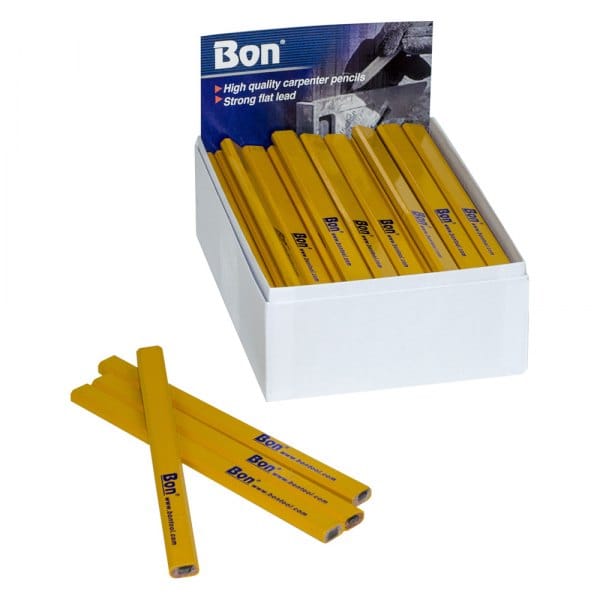
Brands and Variations of Carpenter Pencils
The market for carpenter pencils offers a variety of brands and designs, each with unique features tailored to meet the specific needs of professionals in the construction industry. These variations cater to different preferences, ensuring that every carpenter can find the perfect tool for their work.
Exploring the Diversity
Brands like Bon Tool and Staedetler & Superior Tile Cutter have long been staples in the construction field, offering high-quality carpenter pencils designed for durability and efficiency. These brands emphasize pencils that can withstand the harsh conditions of construction sites, with leads that provide clear, legible lines on various surfaces.
The FastCap FatBoy Pencil Kit: A Standout Choice
The FastCap FatBoy Pencil Kit represents a significant evolution in the world of carpenter pencils. It combines the robustness required for construction work with the precision and convenience of mechanical pencils. This kit is especially notable for its unbreakable 5.5mm lead and versatility, accommodating different materials with its standard HB2 lead, red crayon, and white soapstone options. Its design ensures that it remains sharp for longer, reducing the frequency of sharpening and making it a favored tool for many professionals.
Features and Benefits
- Versatility: Various brands offer leads suitable for different materials, from wood to metal, ensuring versatility across projects.
- Durability: Carpenter pencils are designed to endure the demands of construction sites, with thick leads and sturdy bodies.
- Precision: The unique shapes, including flat and rectangular designs, allow for precise markings, essential for accurate measurements and cuts.
- Convenience: Some modern variations, like the FastCap FatBoy, merge traditional utility with the convenience of mechanical pencil mechanisms, offering the best of both worlds.
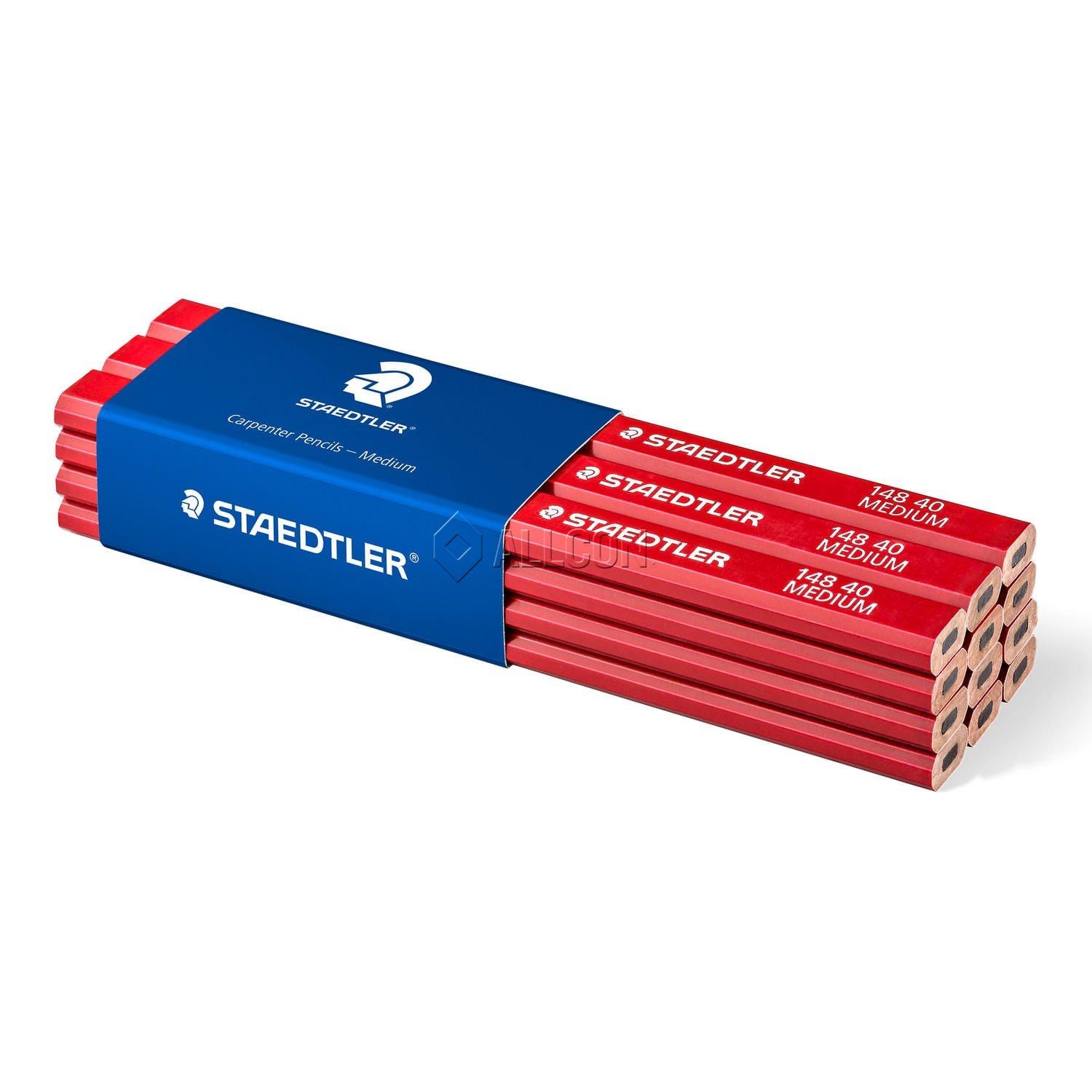
Making the Right Choice
When selecting a carpenter pencil, consider the specific requirements of your project. The material you'll be marking, the level of precision required, and your personal preferences in handling and usage are crucial factors. Whether opting for a traditional Bon Tool carpenter pencil for rough surfaces or the innovative FastCap FatBoy for its mechanical precision and versatility, the right pencil can significantly enhance efficiency and accuracy in your work.
How to Sharpen and Use Carpenter Pencils
Sharpening and using carpenter pencils correctly is essential for maximizing their utility in construction projects. Unlike standard pencils, carpenter pencils require specific techniques for sharpening and marking, tailored to the demands of rough surfaces and precision work.
Sharpening Carpenter Pencils
Traditional carpenter pencils are typically sharpened with a utility knife rather than a standard pencil sharpener. This method allows for more control over the shape and size of the lead, enabling the user to create a fine point for detailed marking or a broader edge for visible lines on rough materials. The FastCap FatBoy Pencil Kit, however, offers the convenience of being sharpened in a standard pencil sharpener, thanks to its robust 5.5mm lead, blending traditional utility with modern ease of use.
Techniques for Effective Use
- Marking on Rough Surfaces: When marking on rough surfaces like wood or concrete, use the side of the lead to create wider, more visible lines that won't easily wear away.
- Creating Thin Lines: For precision work, sharpen the pencil to a fine point and use the tip to draw thin, accurate lines.
- Drawing Parallel Lines: By holding the pencil at a consistent angle and using a straight edge or ruler, you can easily draw parallel lines for measurements or cutting guides.
Tips for Durability and Efficiency
- Keep several pencils sharpened and ready to ensure you have the right tool for different marking needs.
- Utilize special sharpeners designed for carpenter pencils to maintain the optimal angle and length of the lead.
- Experiment with different lead types (hard, medium, soft) to find the best match for your specific project materials and conditions.
Conclusion
Choosing the right carpenter pencil is crucial for accuracy, efficiency, and durability in construction and woodworking projects. The traditional flat design prevents rolling and allows for easy marking on rough surfaces, while innovations like the FastCap FatBoy Pencil Kit offer the convenience of mechanical pencils with the robustness needed for construction environments.
Whether you prefer the classic feel of a wood-encased pencil or the modern twist of a mechanical one, the key is finding a tool that fits your specific needs. With the right carpenter pencil in your tool belt, marking and measuring become more precise, contributing to the overall success of your projects.
Frequently Asked Questions
Q1: Why do carpenter pencils have a flat shape?
A1: Carpenter pencils have a flat shape to prevent them from rolling away on inclined surfaces, making them more practical for use in construction environments. This design also allows for a better grip and the ability to draw thick or thin lines based on how the pencil is held.
Q2: Can you use a regular pencil sharpener on carpenter pencils?
A2: Generally, no. Carpenter pencils are designed to be sharpened with a utility knife to control the shape of the lead for different marking needs. However, some modern carpenter pencils, like the FastCap FatBoy, can be sharpened in a standard pencil sharpener due to their unique design.
Q3: What makes the red color of some carpenter pencils significant?
A3: The bright red color of some carpenter pencils makes them easy to spot on a cluttered workbench or in a tool belt, reducing the time spent searching for the tool.
Q4: How do you draw thin and thick lines with carpenter pencils?
A4: Thin lines can be drawn by using the sharpened edge of the pencil, while thick lines can be made by using the side of the lead. Sharpening the pencil to a fine point or a flat chisel tip can offer versatility in marking.
Q5: Are there alternatives to carpenter pencils for marking on rough surfaces?
A5: While carpenter pencils are preferred for their durability and practicality, alternatives like permanent markers or crayons specifically designed for construction use can also be effective for marking on rough surfaces. However, these alternatives might not offer the same precision and versatility as carpenter pencils.







